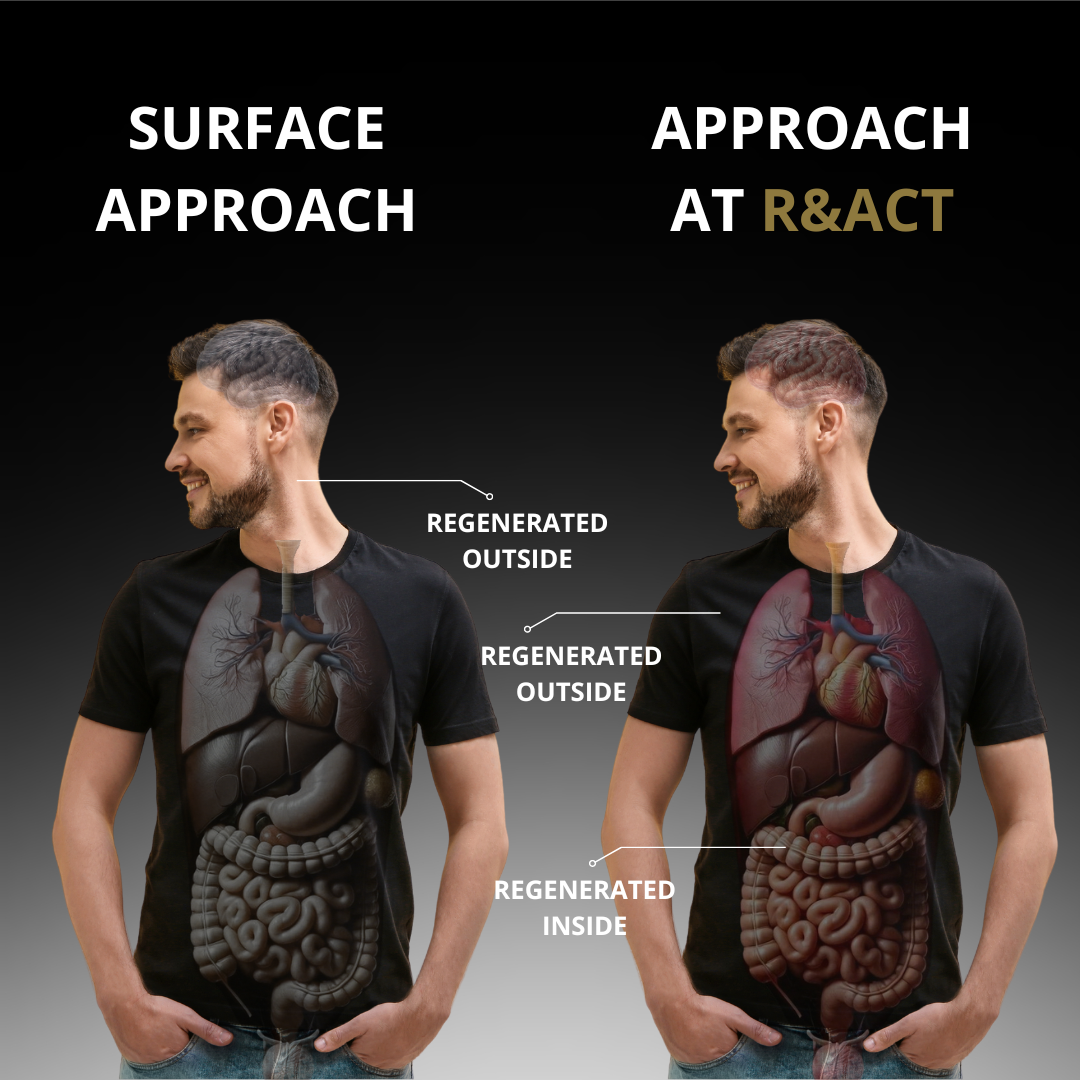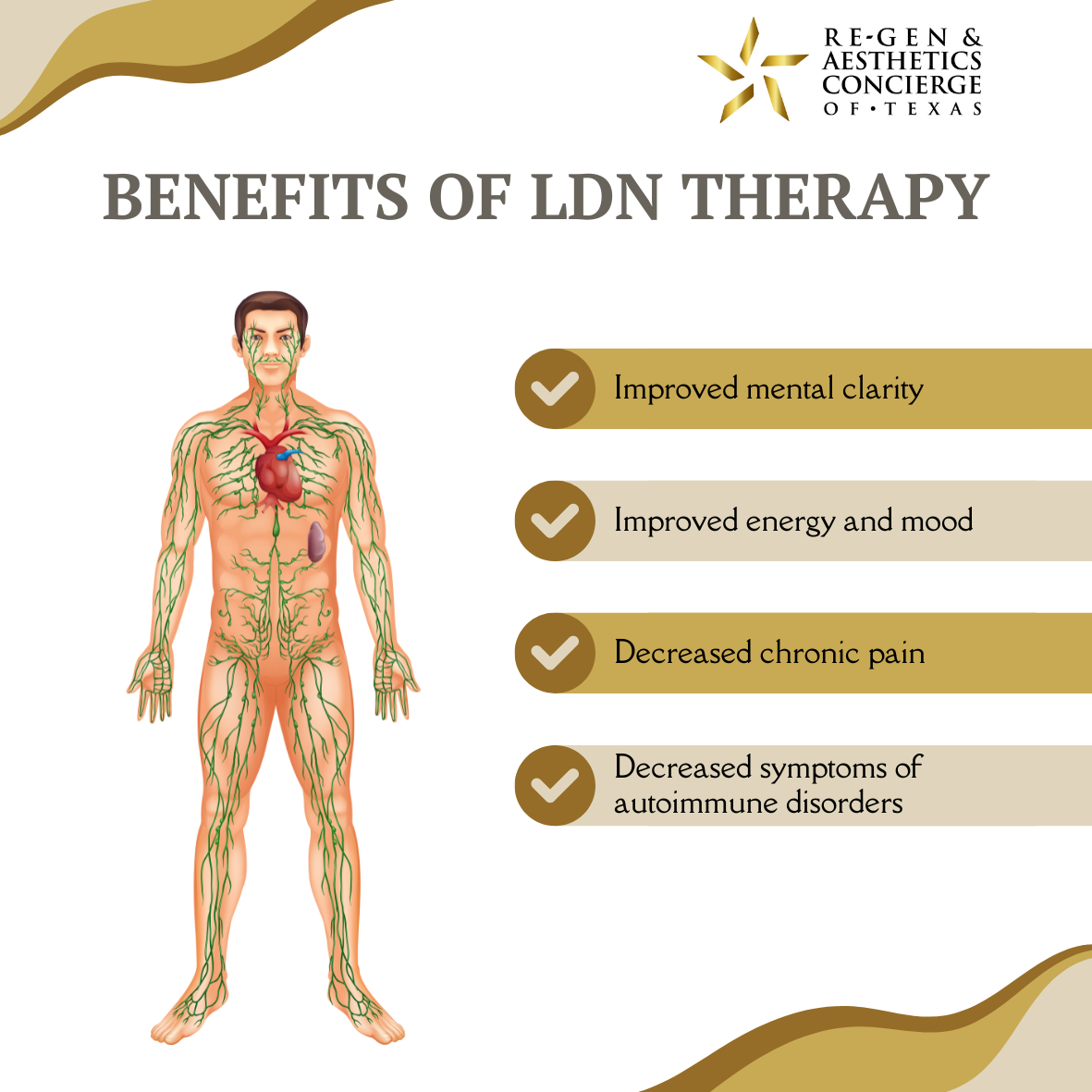Weight Loss & wellness
LDN Therapy
Low Dose Naltrexone (LDN) Therapy has emerged as a promising avenue in the realm of functional medicine, offering a unique approach to enhance overall well-being. In this article, we delve into the world of LDN Therapy, exploring its definition, mechanisms, and the myriad of benefits it offers.


Low Dose Naltrexone Radio Interview
LDN RADIO INTERVIEW
Enlightening radio interview with integrative medicine pharmacist – Jim Hrncir RPh and U.K.’s Linda Elsgood, internationally known expert in Low Dose Naltrexone therapy. Poignant patient conditions that affect us all are discussed, centered around auto-immune, inflammatory and insulin resistance/cholesterol disorders.
Ready To Book An Appointment?
Ready to schedule your Initial Consultation with our Nurse Practitioners? Click on the link below!
What Is LDN Therapy?
LDN Therapy involves the use of low doses of naltrexone, an FDA-approved medication traditionally prescribed in higher doses to treat opioid addiction. In lower doses, typically ranging from 1 to 5 milligrams, naltrexone exhibits different pharmacological properties, impacting the body’s endorphin levels and immune system in distinctive ways.
As LDN Therapy continues to gain recognition, its potential benefits for wellness and overall health are becoming increasingly evident. Whether utilized for pain management, immune system support, or mood enhancement, LDN Therapy represents a versatile approach to holistic well-being. Individuals considering LDN should consult with qualified healthcare professionals to determine its suitability for their specific needs and conditions.
The primary mechanism of LDN Therapy revolves around modulating the body’s immune response and promoting the release of endorphins. By blocking opioid receptors temporarily, LDN prompts the body to increase its production of endorphins. This, in turn, can have positive effects on pain perception, inflammation, and overall immune function.

Ready To Book An Appointment?
Ready to schedule your Initial Consultation with our Nurse Practitioners? Click on the link below!

How Does LDN Therapy Work?
- A reversible blockade (lasting 4-6 hours) of the opioid receptor site and opioid growth factor site leads an increased and persistent production of Enkephalins (including Endorphins) and Met-Enkephalin (including Opioid Growth Factor)
- Endogenous Endorphins and Enkephalins act at Mu receptors to downregulate pain receptor messaging
- Endorphin receptors are found on all immune cells, and when they are populated, immune modulation and optimization ensues.
- Dopamine release in the synaptic cleft is increased
- Persistent increased production of Opioid Growth Factor activates the OGF receptor, which leads to downregulation of inflammatory cytokine release, auto-immune cascades, and oncogene expression
- LDN blocks Toll Like Receptors, which attenuates neuro-inflammation in the central and peripheral nervous system and modulates auto-immune cascades
LDN Side Effects
- Side effects are relatively rare (usually associated with the FULL Naltrexone dosing of 50-200mg compared to LDN dosing of 1-4.5mg)
- Most common side effect of LDN is vivid dreams lasting a few days after starting or increasing dosing, especially if taking LDN at night
- Rarely, stomach cramps and diarrhea are experienced, and typically resolve within a few days
- Rarely, headaches are experienced, and typically resolve within a few days
- Flu like symptoms can ensue when starting LDN or increasing dose. if symptoms last longer than 24 hours, take half dose until symptoms resolve
- LDN can incrase thyroid sensitivity, increase peripheral tissue T3, upregulate thyroid hormone secretion. Therefore, a reduction of thyroid medication may be needed (thyroid labs should be monitored)

Benefits of LDN Therapy
APPOINTMENT?
- Pain Management:
LDN has shown promise in managing chronic pain conditions, such as fibromyalgia and neuropathic pain, by influencing the body’s perception of pain.
- Immune System Modulation:
LDN is believed to have immune-modulating effects, potentially benefiting individuals with autoimmune disorders by helping regulate immune responses.
- Mood Enhancement:
The release of endorphins through LDN Therapy may contribute to improved mood, making it a potential adjunct in mental health support.
- Anti-Inflammatory Effects:
LDN has demonstrated anti-inflammatory properties, which could be advantageous for conditions characterized by inflammation.
- Support for Neurological Conditions:
Some studies suggest that LDN may offer support for neurological conditions, including multiple sclerosis and Parkinson’s disease.
LDN Therapy FAQ
In this FAQ section, we will answer some common questions about LDN Therapy. Whether you’re considering a speific type of LDN therapy or just curious about the procedure, this section will provide you with valuable information to help you make an informed decision.
Please reach us at info@ra-tx.com if you cannot find an answer to your question.
How does the LDN Therapy work?
LDN Therapy, or Low Dose Naltrexone Therapy, works by utilizing low doses of naltrexone, a medication traditionally used for opioid addiction. In lower doses, it modulates the immune system, enhances endorphin production, and exhibits anti-inflammatory properties.
How long before I see benefits?
- Patients usually begin to see effets within first 60 days, often faster
- 8-12 months continuous therapy is a “thorough trial.
What are proposed uses of LDN (the short list)
- Pain
- Arthritis
- Inflammatory conditions
- Hashimito’s and Graves’ Thyroiditis
- Auto-Immune disorders
- Neurodegeneratlice Disorders (e.g. Multiple Sclerosis, Parkinson’s)
- Seizures
- TBI, PCS, PTSD
- Mood disorders
- Chronic Fatigue, Fibromyalgia
- Eczema, Psoriasis
- Chron’s, Ulcerative Colitis, IBS
- Vector Born Illness
- Mast Cell Activation Syndrome
- Toxic Mold Illness
- HIV
- Complex Regional Pain Syndrome
What can I expect after the therapy?<br />
Post-treatment experiences can differ among individuals. Some may notice improvements relatively quickly, while others may require more time. Potential outcomes include pain relief, mood enhancement, and improvements in certain health conditions, but individual responses vary.
What other medications may interact with LDN?
- LDN may increase effect of Warfarin (INR needs to be monitored for dosage adjustment)
- LDN may increase effectiveness of neuroleptics (chlorpromazine, clozapine, risperidone)
- Do not take LDN if you are taking anti-rejection meds, on anti-tumor necrosis factor meds, PD-1 inhibitors, or anti-cancer vaccines
Who should not take LDN?
- Do not take LDN if you are pregnant or nursing (Pregnancy category c)
- Do not take LDN if you are on chronic opioids
Ready To Book An Appointment?
Ready to schedule your Initial Consultation with our Nurse Practitioners? Click on the link below!
